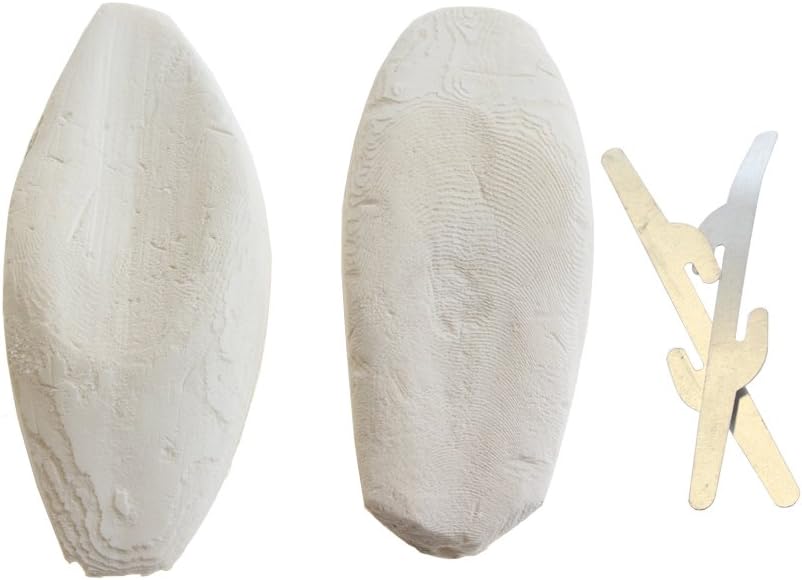
Natural Cuttlefish Bone for Reptiles, Tortoises, Snails, Birds and Small Animals, 4-6 inch, Twin Pack
FREE Shipping
Natural Cuttlefish Bone for Reptiles, Tortoises, Snails, Birds and Small Animals, 4-6 inch, Twin Pack
- Brand: Unbranded

Description
Hatchlings and young specimens can be kept indoors, and although a vivarium is often offered as suitable accommodation, the humidity in such an enclosure can reach levels much higher than commonly found in the wild, leading to respiratory problems. When it comes to feeding cuttlefish to tortoises, the recommended portion size is based on the size and age of the tortoise. A general rule of thumb is to feed a portion that is roughly the size of the tortoise's shell. This ensures that the tortoise receives enough protein without being overwhelmed by a large portion. It is also important to note that cuttlefish should be offered as part of a varied diet and not as the sole source of food. Vegetables, leafy greens, and other protein sources should also be included to ensure a well-rounded and balanced diet. While you will almost certainly resolve the calcium to phosphorus imbalance, you are just as likely to introduce another problem by accident. Chard, collard greens, kale, cabbage, spinach, etc. all contain other ingredients that can prevent the tortoise from effectively absorbing calcium. Interestingly, cuttlebone is an actual bone from the Cuttlefish- Sepia officinalis. They are closely related to octopus. They produce a brown ink which the color sepia is named after. (PBS) The more you vary the diet the happier your Tortoise will be, try and mix the ingredients as much as possible and try not to to give the Tortoise to much Cucumber and Lettuce as these have no nutritional value but can help rehydrate your Tortoise.
a blend of Nutrobal and Ace-High (2:1). It provides a Calcium:Phosphorus ratio (Ca:P) of 30:1 and contains vitamins A, C and E, making it suitable for the maintenance of adult reptiles. Ace High:contains high levels of vitamin A, C, and E. These higher levels of vitamins are beneficial during periods of stress and disease. Vitamin A and E are both involved in helping the body resist infection. Vitamin A is essential for healthy mucous membranes such as mouth, lungs, and gut. Vitamin E has been shown to boost the immune system. Vitamin C is rapidly utilised by the body when a tortoise is under stress. While uncommon in the Americas (as they aren’t found there), cuttlefish is quite common in the English Channel and many other coastal waters around the world.When feeding cuttlefish to your tortoise, it is important to monitor their consumption and adjust the frequency accordingly. Some tortoises may eat more or less than others, based on their individual needs. As a responsible tortoise owner, it is your role to observe your pet's eating habits and adjust their diet to ensure they are getting the right balance of nutrients.
In still don't know whether he is big enough to hibernate, we've brought up four children and it was either than looking after this little chap !!! The bones of cuttlefish are high in calcium. Most calcium supplements contain cuttlefish bone as their primary ingredient. Cuttlefish can also be obtained fresh at most pet stores. However, be careful when buying cuttlefish because the shells are extremely sharp and may cause injury to the tortoise or a person. Therefore, be sure to remove the shell and cut the bones into pieces before putting them into the tortoise’s bowl. Cuttlefish is a good source of oxalic acid The tortoises we find most popular in the U.K are the Eastern Hermann’s, Mediterranean Spur-thighed, Marginated, Western Dwarf Hermann’s and Horsfield. These breeds are most commonly kept as they are fairly hardy making them great for anyone as a starter tortoise as they are easier to look after than some of the higher maintenance tropical breeds that are more sensitive to their environment. Additionally, cuttlebones usually wash up on beaches since it floats and is the last part of the cuttlefish to disintegrate after death. These shells are harvested and sold to pet shops all over the world. As mentioned, cuttlebones are useful for tortoises, birds, and other pets. These oblong, white, chalky textured bones are rich in calcium carbonate (85%). Of course, you will also find other minerals like sodium, magnesium, iron, and phosphorus. But the amount is negligible.So, it should, by now, be fairly obvious that tortoises need some sort of additional source of calcium in their diets. Fortunately, there is a wide-range of both powders and supplements out there that you can give your tortoise. Another potential risk is the high content of iodine in cuttlefish. While iodine is an essential nutrient for tortoises, excessive consumption can lead to hyperthyroidism, a condition where the thyroid gland becomes overactive. Symptoms of hyperthyroidism in tortoises include increased appetite, weight loss, increased activity levels, and even death in severe cases. Therefore, it is important to offer cuttlefish as a treat or occasional supplement to the tortoise's regular diet, rather than as a primary food source.
- Fruugo ID: 258392218-563234582
- EAN: 764486781913
-
Sold by: Fruugo
